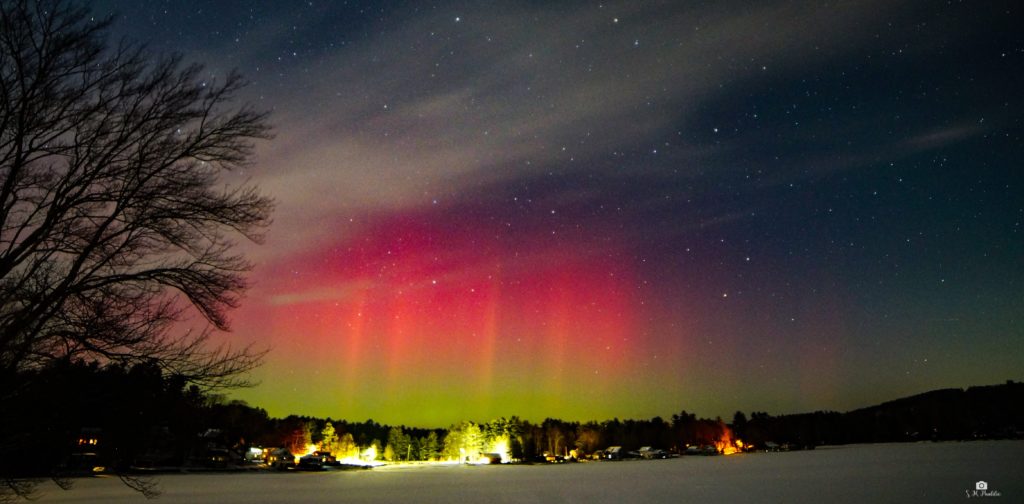Northern Lights Viewed Across New England And Over Lake Wyola Last Weekend

Northern lights over Lake Wyola, February 26, 2023, 11 p.m. Photo: Susan Panlilio
The Northern Lights (Aroura Borealis) were viewable across New England last weekend. Spectacular displays were spotted across northern North America and Northern Europe. The Boston Globe reported that light pillars were viewed throughout New England on Saturday (2/25) night. In widely reported instances, pilots circled their planes mid-flight to give their passengers a closer look at the phenomenon.
In Shutesbury, photographer Susan Panlilio, captured the light display hovering over Lake Wyola around 11 p.m. on Sunday (2/26). Panlilio noted on Next Door that the display is not as spectacular when viewed by the naked eye as it is when seen through a camera lens. Nonetheless, others reported on Next Door that they had indeed witnessed the display with their naked eyes. Panlilio has captured the aurora over Wyola before and noted that there are web sites that offer forecasts but spotting the aurora is also a matter of luck. Tilda Hunting of Conway provided the following web site for alerts on when the aurora may be visible. https://softservenews.com/
The Northern Lights are the result of collisions between gaseous particles in the Earth’s atmosphere with charged particles released from the sun’s atmosphere. Variations in colour are due to the type of gas particles that are colliding. The most common auroral color, a pale yellowish-green, is produced by oxygen molecules located about 60 miles above the earth. Rare, all-red auroras are produced by high-altitude oxygen, at heights of up to 200 miles. Nitrogen produces blue or purplish-red aurora. Light pillars are shafts of light caused when light is refracted by ice crystals.
Researchers at NASA’s Solar Dynamics Observatory said they had detected two M-class solar flares on Friday and Saturday that led to coronal mass ejections, triggering the recent bout of elevated geomagnetic activity and producing the atmospheric light displays.
The aurora can be seen anywhere but are frequent at higher latitudes and places, closer to the Earth’s poles. To view them, look in the direction of the closest pole (the northern horizon in the northern hemisphere, the southern horizon in the southern hemisphere). They may be visible any time of the year.
